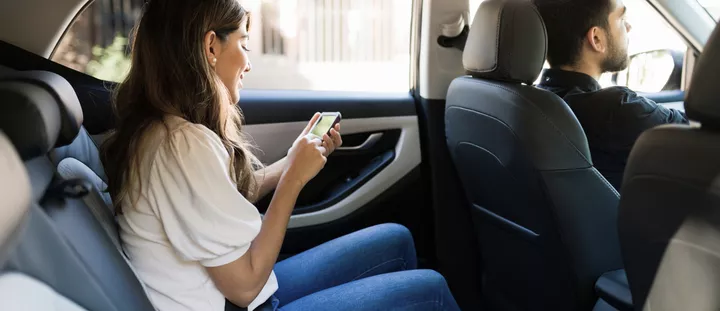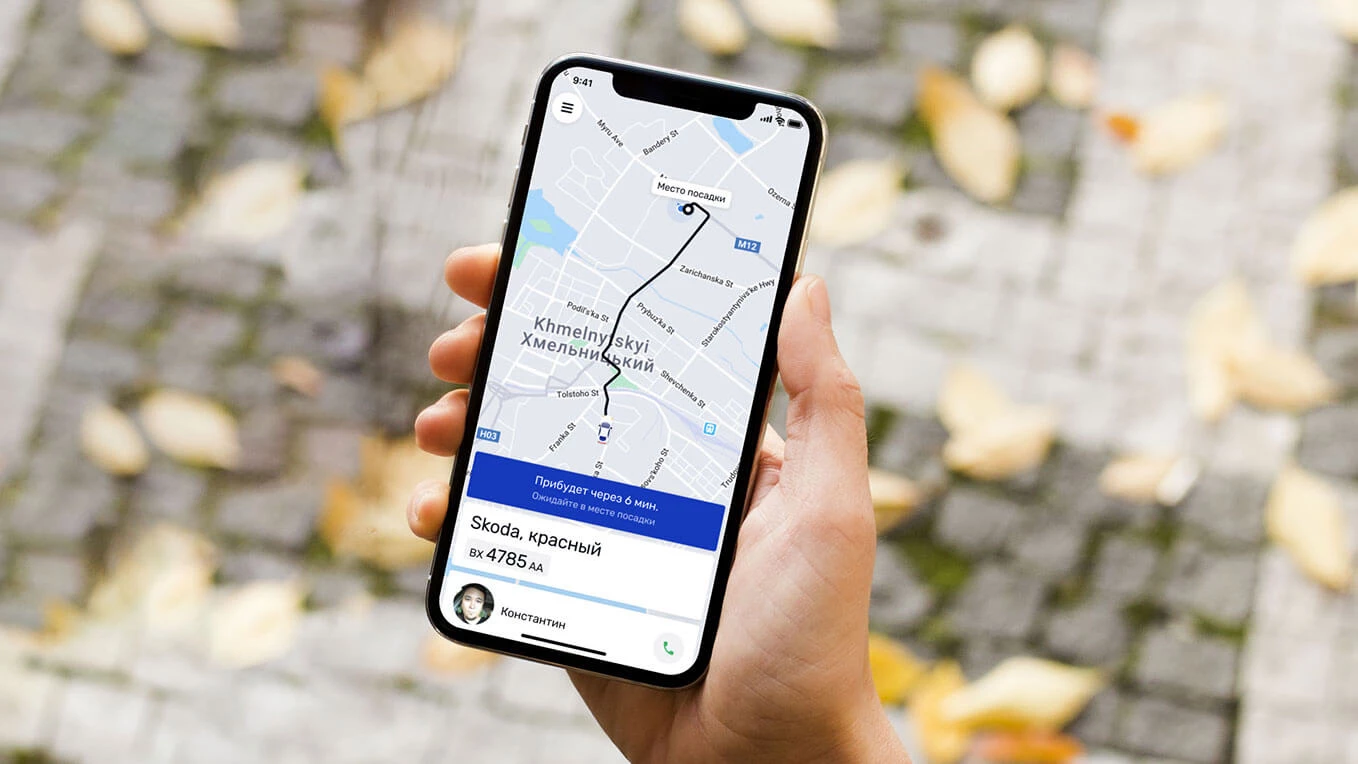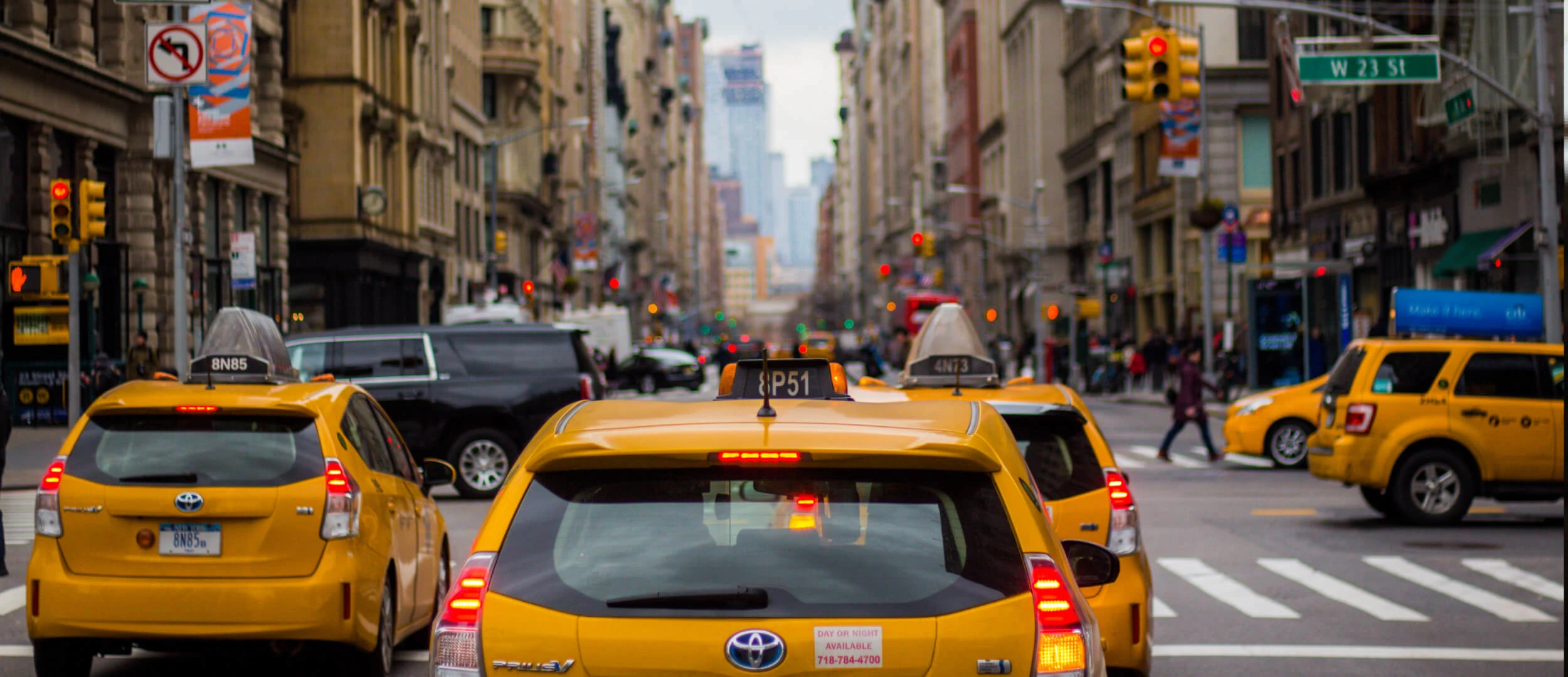
Every founder chasing the “next Uber” hits the same wall: launch fast, then watch margins evaporate as routes, riders, and regulators collide. Since Uber rewired its funnel toward subscriptions and Bolt integrated e-bikes into its core app, raw speed to market is now table stakes. What matters is precision—matching driver to rider in under a second, pricing down to the block, and scaling to a new city without rewriting half the backend.
If those challenges keep you up at night, you’re in the right place. Stfalcon’s team has developed logistics software that moves millions of parcels and passengers each month; we know how to turn tangled real‑time data into smooth, profitable journeys. In the pages ahead, we’ll unpack the strategy, differentiation tactics, and integration playbook required to build a rideshare app that actually competes—so you can stop fighting fires and start winning markets.
What Separates a Competitive Rideshare App from the Rest
There’s no room left in the market for another Uber clone. Generic apps with templated features, slow dispatching, and poor tracking are dead on arrival. To compete today, your rideshare application needs sharp differentiation—not just in features, but in the way it earns trust, handles complexity, and scales with precision.
Let’s break down what actually sets leading platforms apart—and what your app needs to stand a chance.
UX & the Driver-Rider Trust Loop
A competitive app fosters a strong "trust loop" between drivers and riders. This is built through intuitive, seamless user experiences that extend beyond booking. Think crystal-clear communication features, transparent profiles, consistent safety protocols, and fair dispute resolution. For drivers, this means reliable earnings transparency, efficient navigation, and responsive support. For riders, it’s about perceived safety, consistent service quality, and predictable pricing.
Top-performing apps invest heavily in feedback loops: seamless onboarding, reliable rating systems, real-time ride updates, and human-like ETA adjustments. These micro-interactions reduce churn and increase ride frequency. Bolt, for example, keeps both drivers and riders engaged by constantly fine-tuning these touchpoints through rapid iterations and regional feedback.
Precision of Real-Time Tracking & Route Optimization
The difference between a 3-minute wait and a 7-minute wait isn’t just user experience—it’s conversion. Precision in GPS, dynamic rerouting, and live traffic integrations are non-negotiable. This app offers accurate GPS tracking that goes beyond basic location pins. It provides real-time updates and precise estimated arrival times (ETAs). Its route optimization algorithms are advanced and change based on traffic, road closures, and demand patterns. This helps reduce travel time and fuel usage.
Our dedicated logistics software developers have a lot of experience creating routing and fleet management solutions for logistics. This expertise ensures that your app is accurate and reliable from the start. In the rideshare app we created for our clients, users can find other travelers who also have the app and are nearby. Users can set the distance for this search in the settings, which is 2 km by default. This presents an opportunity to find a ride quickly and comfortably, without stretching the wait time.
Scalable Architecture That Actually Holds Up
A truly competitive rideshare app development is based on a resilient foundation designed for exponential growth. This means a cloud-native design that can run in multiple regions. It ensures low latency and high availability, even when there are a lot of users and changing demand. It’s about anticipating peak hours, handling concurrent requests from millions of users and drivers, and integrating new features or services without compromising performance.
Without a strong ability to grow, any advantage you achieve in the market will quickly disappear as you become successful. We have a strong history of creating reliable logistics systems for businesses. This experience helps your app meet global demand effectively and consistently.
Smart Matching Algorithms
Rideshare apps use advanced algorithms, often powered by AI, to connect drivers with riders. It's not just about being nearby. These algorithms consider several factors, including driver ratings, vehicle type, trip duration, current traffic conditions, historical demand trends, and driver preferences.
inDrive offers a different approach by allowing users to negotiate fares directly. This creates a business based on clear pricing. But under the hood, it’s still about smart, flexible matching logic that works in real-time, and scales without breaking.
Want a rideshare app that does more?
Let’s build a solution that’s scalable and ready for real-world demand.
Alina
Client Manager

Planning a Ride Sharing App: Questions You Must Answer Before Development
Too many ride sharing apps fail not because of bad tech, but because of unclear positioning, incomplete planning, and decisions driven by assumptions rather than real-world constraints. Before you build any features, make sure you understand your business model, your users, the flow of operations, and the logistics support you will need.
From our experience helping clients with complex logistics software projects, we have found key questions every business owner needs to answer before starting any coding.
1. Who is Your Target Audience (Riders and Drivers), and What's Their Core Pain Point?
Are you focusing on urban commuters, specific corporate clients, luxury travelers, individuals with mobility challenges, or even specific groups like student carpooling or women-only rides? What unique value proposition are you offering to attract and retain quality drivers?
2. What rideshare model are you building?
- A peer-to-peer model, like early Uber, needs strong verification, rating systems, and a way to balance supply and demand effectively.
- A fleet-based model means dispatch optimization, shift planning, and potentially vehicle tracking systems.
- An aggregator, like Bolt, working with taxi companies, needs to connect with other systems and have flexible pricing options.
Without a clear answer here, you risk building an app that doesn’t match your operational model.
3. What logistics data do you need to collect, and how will you use it?
It’s not enough to track vehicles. You need to understand:
- Real-time driver locations
- Ride demand by zone and time of day
- Traffic and ETA patterns
- Rider drop-off patterns
Plan now for the data layer that will power your algorithms later.
4. How will you ensure trust and safety for both drivers and riders?
This is about more than ratings and reports.
- What kind of identity verification do you require?
- How will you handle disputes or safety incidents?
- Do you need live location sharing, SOS buttons, or driver behavior monitoring?
Without building trust into the system from the beginning, retention will be compromised in any competitive or regulated market.
At Stfalcon, we always recommend an initial discovery phase together before starting development. In this phase, we work with clients to find the essential questions, figure out the priorities, and design the system architecture. A minor investment of time at the start, in a couple of phases, will pay for itself exponentially with regard to development and launch.
How to Create a Rideshare App: Core Infrastructure for Seamless Operations
When you're designing an app and client experience that has live action on real-time traffic, live track of where drivers physically are, and 1000's of micro transactions occurring simultaneously at every second, you're going to absolutely need a scalable, cloud-based solution.
Structure For Scaling and Reliability
For a rideshare app, peak performance is not an option; it will be required. You will have thousands of users wanting to book rides at the same time, drivers wanting to accept rides to earn cash, and an ongoing range of payment processing. If you don't build out a strong design of how to manage a large surge of users ,your app could buckle under the load. If it buckles under pressure, you'll be slowed down, will have lost sales, and it will also damage your reputation as the rideshare app of choice.
Your backend must be a strong, cloud-based solution. This is a good guess based on any rideshare platform. Use solid cloud options like AWS, Azure, or Google Cloud, and your design will allow you to grow, flex, and adapt to your clients' requests. The focus here is on easy growth. This means the system can add more resources, like servers or computing power, as needed, without needing major changes. This ensures that whether you're serving one city or growing to a global scale, your app performs well. It can handle millions of users and transactions at the same time without any problems.
Real‑Time Tracking & Geolocation Mastery
The promise of ridesharing hinges on transparency and immediacy. Logistics operations rely on advanced real-time tracking and location technology. This technology is essential for managing these operations effectively.
Precision Mapping & Routing
At the core are advanced mapping APIs from providers like Google Maps or Mapbox. These aren't just for showing a pin on a map; they enable hyper-accurate real-time tracking of both riders and drivers, dynamic route optimization that accounts for live traffic conditions, road closures, and even predicted congestion, and precise estimated times of arrival (ETAs).
- Hybrid APIs: You can combine Google Maps for urban routing, OpenStreetMap + Valhalla for rural or cost‑sensitive areas.
- Dynamic ETA engine: The system updates arrival times every few seconds. It uses this information to improve the matching algorithm and the rider interface.
Geofencing & Zone Management
Geofencing allows you to set up virtual boundaries on a map for various operational needs, going beyond just basic mapping. This includes using different pricing strategies for specific places, like adding extra charges at airports or higher prices in downtown areas. It also involves assigning drivers in busy areas efficiently and following rules by limiting operations in certain locations.
- Create virtual zones for price bands, driver incentives, or regulatory “no‑go” areas.
- Real‑time entry/exit triggers update surge multipliers and driver availability within < 50 ms.
Intelligent Dispatch & Matching Algorithms
A rideshare platform works best when it can effectively connect drivers (supply) with riders (demand). This requires advanced algorithmic prowess.
- AI-Powered Matching: This is where machine learning truly shines. AI algorithms can look at several factors to match drivers with passengers. They consider the driver's location, type of vehicle, driver ratings, past performance, demand for rides in certain areas, and current traffic conditions. This helps ensure the best driver-passenger pairings.
- Dynamic Pricing Engine: A highly competitive ride sharing app software has a dynamic pricing engine that uses mathematical algorithms. Those algorithms change pricing in real-time based on changes to supply and demand, traffic conditions, time of day, weather, or special events.
Secure Payment Gateway Integration
Seamless and secure financial transactions are messy, but they are essential for building trust and the overall functionality of any rideshare platform.
- Reliable and Secure Processing: Having a good integration with top payment gateways (such as Stripe, PayPal, or Braintree) or local payment solutions (i.e., ACH providers) is critical to enable secure, reliable transaction processing. In addition to the reliability of your payment provider, since you will be expected to comply with that site's global regulations on financial transactions, they will provide some financial management assistance.
- Handling Complex Transactions: Rideshare platforms have a complex financial flow. Your payment infrastructure needs to support complex transactions, such as making automatic commission deductions, by calculating surge pricing, ensuring clear disclosure on driver payouts and tips, and tip processing.
- Multi-Currency Support: If your asset's ambition is to operate in more than one market, you must consider multi-currency assets for a seamless experience across your operations and to aid your market entrants, so you can easily pay in local currencies where you operate with different local payment methods and provide a seamless experience with the least friction.
By systematically building and optimizing each of these components of core infrastructure, you will create a rideshare business with a high-performance app, able to dominate its chosen market and have the flexibility to scale into the future.
Read Also:
Build a taxi booking app: key features, tech stack, and cost
Advanced Features That Make Your Rideshare App Stand Out
Rideshare or taxi app development often begins with an MVP (Minimum Viable Product) – the leanest version with just enough core features to solve a fundamental problem and test the market. This allows for rapid deployment and iterative feedback. However, to truly gain a competitive edge and capture market share, a full-fledged product goes far beyond the MVP, integrating advanced features that enhance user experience, optimize operations, and build long-term loyalty.
Here are some examples of the advanced features that can differentiate your rideshare app.
AI/ML for Predictive Analytics
- Demand Forecasting: Predict high-demand areas and times to pre-position drivers and reduce wait times.
- Personalized Recommendations: Utilize AI to tailor ride options, promotions, or even driver suggestions based on individual user history, preferences, and behavior, creating a more engaging and personalized experience.
Enhanced Safety & Security Features
Safety is paramount in ridesharing. Going beyond basic features, competitive apps integrate.
- In-app Panic Buttons: Direct integration with emergency services (police, ambulance) for immediate response in critical situations.
- Audio Recording Capabilities: Offer optional, consent-based in-ride audio recording for dispute resolution and enhanced accountability.
- Advanced Background Check Integrations: Seamlessly integrate with sophisticated background check services to ensure continuous driver vetting and compliance.
Multi-Modal & Specialized Services
Diversify your offerings to cater to a broader range of needs and preferences.
- Integrated Mobility: Let users book scooters, bikes, or public transport within the same app.
- Specialized Vehicles: Options for luxury, wheelchair-accessible, pet-friendly, or female-only rides.
- Scheduled vs. On-Demand: Enable both instant and planned rides with smart scheduling logic.
Gamification & Loyalty Programs
Implement reward systems, tiered membership programs, or in-app challenges for both riders and drivers. These incentives drive repeat use, foster community, and significantly increase engagement and retention by turning every ride into a more rewarding experience.
These advanced features aren’t just bells and whistles—they’re strategic levers that shape user behavior, improve retention, and define your platform’s brand. For the best long-term ROI, we help clients introduce them iteratively, once the core system proves stable and scalable.
Rideshare App Development Cost
An important aspect when you are thinking about how to develop a rideshare app is its cost. The cost of a rideshare solution development depends on the tech stack of your app. If you want to build a simple ridesharing platform with all the essential features, it will cost around $80000. For more complex solutions, expect to pay more.
The complexity of your project also affects its overall cost, as well as the time taken for the development process and the specialists involved. The geographical location of developers also influences the cost of rideshare app custom development. Professionals from the USA, Canada, and the UK charge more than those from India, Poland, or Ukraine.
Avoidable Pitfalls and Hidden Costs in Ride-Sharing App Development
Even with the most meticulous planning, the journey of creating a rideshare app is fraught with potential pitfalls and hidden costs that can derail timelines and inflate budgets. Many of these stem from underestimating the complexities unique to real-time, geographically-driven platforms, especially when dealing with external dependencies.
Over-Reliance on Third-Party Services
While APIs for maps, payments, identity verification, or geofencing accelerate development, they also introduce dependency risks.
Our approach involves early identification of critical third-party services, rigorous due diligence on their reliability and documentation, and designing systems with fallback mechanisms to minimize impact from external failures.
Underestimating the Cost of Scaling Real-Time Data
While the concept of real-time tracking seems straightforward, the technical overhead of processing, transmitting, and securely storing constant streams of location data from thousands of drivers and riders is immense.
Leveraging our expertise in real-time logistics operations, we implement advanced data streaming architectures, distributed databases, and intelligent caching strategies to manage high-volume, low-latency data efficiently and cost-effectively.
Regulatory & Compliance Surprises
Expanding into new cities or countries isn’t just a matter of translation—it often means rewriting parts of your app logic or backend to match local transport laws, insurance requirements, or GDPR-level data compliance.
While not legal advisors, our role involves guiding clients to understand these pre-development requirements and building flexible app architectures that can adapt to varying regulatory demands (e.g., configurable compliance checklists, modular feature sets that can be enabled/disabled by region). Our experience across diverse transportation regulatory environments helps anticipate these challenges.
Each of these pitfalls is avoidable—with the right planning and a development partner who knows what to anticipate before it breaks. It’s not just about writing good code—it’s about building a system that won’t collapse under real-world pressure.
How to Choose a Reliable Partner for Ride-Sharing App Development
When evaluating potential partners, look beyond flashy UIs and generic promises. What truly matters are capabilities that speak to the operational heart of ridesharing.
Look for rideshare app developers with:
- Proven experience in logistics or real-time platforms
- Consulting capability to help shape the product, not just deliver features
- Long-term support mindset for post-launch iterations and scaling
A strong development partner will help you avoid common pitfalls, make tech decisions aligned with your business goals, and move faster from idea to traction.
Stfalcon has been providing logistics and transportation software solutions for companies worldwide for over 15 years. Our clients include industry giants like Ecolines, Eastern Europe's largest coach operator, and Nova Poshta, Ukraine's market-leading express delivery service.
Stfalcon's Experience with Ridesharing App Development
For one of our clients, BBGO, our ride sharing app development company has developed a mobile app for a ride-hailing platform. Our main task was to create a custom application, comfortable for both drivers and riders.
For this project we have created an intuitive UI, integrated flexible payment options, and implemented a unique loyalty program. For navigation, we also helped migrating from GCP to more cost-effective Hetzner Cloud without downtime.
Final Words on Rideshare App Development
Successful ride sharing app development in today’s market goes far beyond replicating existing platforms. It requires a strategic foundation, scalable real-time technology, and a development partner who understands the operational complexity behind urban mobility. From infrastructure to user trust loops, every detail must be engineered for competitive advantage.
If you're serious about launching a platform that stands out, we're here to help. Don't just build another app; build a competitive rideshare solution that redefines urban mobility. Leverage our proven logistics software expertise to turn your concept into a resilient, market-ready product.
Ready to get started? Let’s talk about your goals and how we can make them real.
FAQs About Custom Ride-Share App Development
How long does it typically take to create a rideshare app from concept to launch?
The timeline depends on the app’s complexity and scope, but a typical MVP with core features (real-time tracking, payments, driver/rider modules) takes around 4–6 months. A full-featured, market-ready product with advanced functionality and scalability considerations can take 9–12 months or more, especially if you’re targeting multiple regions or platforms.
How much does it cost to develop a ride sharing app like Uber or Lyft?
Costs can vary significantly based on feature depth, technology stack, and region of development. A basic MVP may start at $80,000–$150,000, while a fully scalable, multi-platform app with advanced AI features, real-time logistics infrastructure, and security compliance can exceed $300,000–$500,000+. Ongoing maintenance, updates, and cloud costs should also be factored in.
What legal requirements should I consider when launching a rideshare app?
You’ll need to comply with local transportation laws, driver licensing and insurance regulations, safety and data privacy standards (like GDPR or CCPA), and platform liability coverage. Some regions may also require driver background checks, ride permits, or operational licenses. Legal readiness is key to avoiding delays or penalties when launching in new markets.

 Read the full case study
Read the full case study


